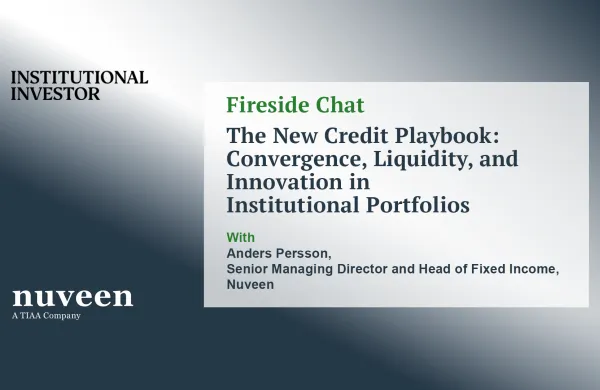Memories are fading of Wall Street’s pre-Digital Age paperwork crisis, when back offices’ inability to keep up with trading documentation forced the New York Stock Exchange to shorten its hours and lengthen settlement deadlines. The specter of capital market paralysis brought fiercely competitive banks onto common ground; in 1973 they formed Depository Trust Co. to standardize and ultimately automate posttrade work flows.
“Industry participants recognized that centralizing functions within a market utility could provide enormous economies of scale to drive down processing costs while also mitigating risk,” Michael Bodson, president and CEO of what is now Depository Trust & Clearing Corp., wrote in a recent article.
The financial industry is currently honing its innovative edge through acquisitions and investments in what has come to be known as fintech. Markets operate around the clock, and technology enables shorter, even near-real-time, finalization of transactions, a movement in which New York–based DTCC is a key player.
Yet Bodson is invoking a historically based and potentially high-impact counterpoint. He is not just advocating utility solutions where appropriate — handling functions that do not deliver competitive advantages to market participants individually, and spreading cost-benefits among the many. He also bristles at the notion that utilities cannot innovate. DTCC has a growing joint venture portfolio, owning positions in derivatives collateral management hub AcadiaSoft; Clarient Global, a data management utility supporting Know Your Customer and other compliance requirements; and Soltra, a developer of cybersecurity intelligence-sharing software.
Bodson and DTCC are not alone in contending that utilities can be a boon to an industry that postcrisis regulatory reform has rendered capital- and cost-constrained. Belgium-based SWIFT — another bank-owned cooperative of 1970s vintage — was and remains a carrier of interbank payment messages of such scale and scope that unit costs have never stopped falling. Attentive to a membership that is “looking for and investing in common solutions,” as chief executive Gottfried Leibbrandt has put it, SWIFT is touting its network’s real-time payments capabilities, promotes fintech innovation through its Innotribe Startup Challenge and has entered the compliance services sweepstakes against Clarient and others with its KYC Registry.
Lines are blurring between old-line, fixed-function utilities and aggressively commercial business models. Technological advances combine with industry leaders’ openness to new ideas to create “more room for differentiation,” says Tim Gokey, chief operating officer of brokerage outsourcer Broadridge Financial Solutions. “A commercial organization has more flexibility” than, say, DTC had when first conceived, “and can help alleviate governance issues,” Gokey asserts.
Financial companies collaborating with technology suppliers is a recurring theme. IBM Corp., Bank of America Corp., JPMorgan Chase & Co., SunTrust Banks, U.S. Bancorp and Wells Fargo & Co. in 2000 formed Viewpointe to process and archive check images. The New York–based company has since expanded into such services as legal e-discovery, records management and big data governance.
Although not regarded as a utility, Bloomberg talked the talk in 2012 when it acquired Dublin-based enterprise data management company PolarLake. It served customers “looking to find new ways to reduce the cost of managing data while adhering to increasing regulatory requirements for transparency,” said then-CEO Dan Doctoroff. The offerings of London-based financial information company Markit include a KYC joint venture with business processes specialist Genpact and, launched in October, Know Your Third Party (KY3P), a vendor risk management system created with bank and buy-side firm input.
Also in October, posttrade data solutions company SmartStream Technologies joined with Goldman Sachs Group, JPMorgan Chase and Morgan Stanley in announcing a reference data utility “to ensure that the duplication of effort is minimized when addressing common market issues such as inconsistent data in regulatory reporting, costly trade breaks and risk management,” says SmartStream CEO Philippe Chambadal.
The blockchain company R3 CEV, working with more than two dozen banks, is pursuing “a collaborative model [as] the best way to quickly, efficiently and cost-effectively deliver these new technologies to global financial markets,” says managing partner David Rutter.
However, the most immediate opportunity for utilization is “core posttrade processing,” Broadridge concluded in a September report, projecting that up to $4 billion could be cut from the $9 billion that large banks spend on trading standardized asset classes. That’s real money. •
Get more on trading and technology.






